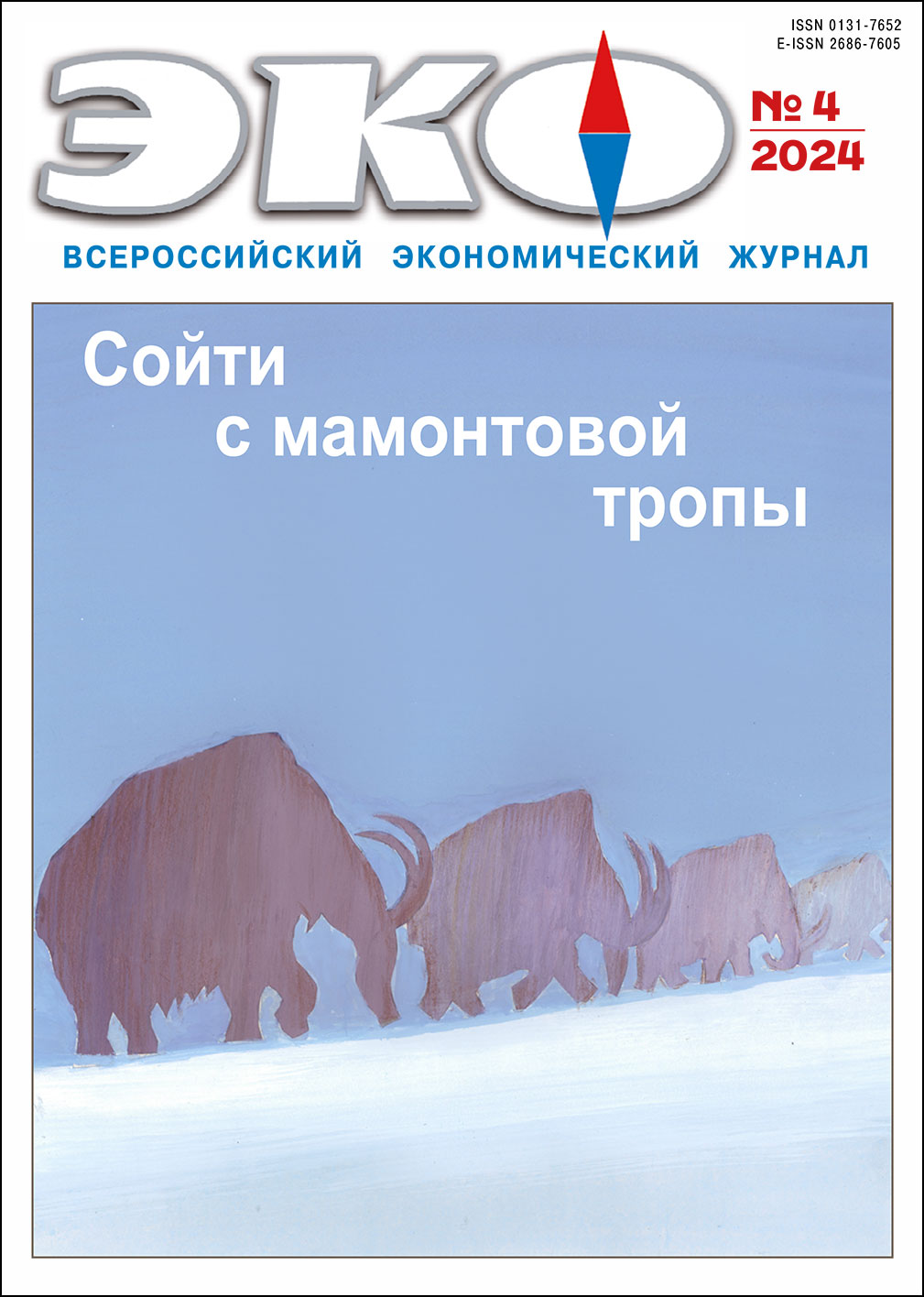INVESTMENT, INNOVATION & INDUSTRIAL POLICIES
Published 2024-08-12
Keywords
- life cycle contracts; public procurement; state socio-economic policy; normative and legal regulation
How to Cite
1.
Kudryavtseva Т, Shvediani А, Kravchenko В. Life Cycle Contracts as a Public Policy Tool. ECO [Internet]. 2024 Aug. 12 [cited 2025 Dec. 24];54(4):97-109. Available from: https://ecotrends.ru/index.php/eco/article/view/4761
Abstract
Successful implementation of the long-term state policy of the Russian Federation in the field of infrastructure projects, production of high-tech equipment requires a detailed understanding of the practice of application and peculiarities of normative-legal regulation of life cycle contracts for the development of methodological support for their implementation and conclusion. The paper analyzes the normative-legal regulation of such contracts in Russia, studies the statistics on them for 2014-2022, identifies the advantages and limitations. Recommendations for the development of this tool are formulated on the basis of the obtained data, which will make it possible to increase its efficiency. In particular, it is recommended to expand the permissible principles of pricing of life cycle contracts, as well as options for confirming the contractor’s qualifications for project companies.References
- Абрамов В.И. Роль государственных закупок в системе государственного управления в России // Вестник ЦЭМИ. 2018. № 1. С. 37.
- Байлиева А.С. Контракт жизненного цикла как инструмент государственно-частного партнерства в транспортной отрасли // Вестник Уфимского юридического института МВД России. 2023. № 2 (100). С. 54–59.
- Белоусов А.Л. Аудит мер поддержки малого и среднего предпринимательства // Актуальные проблемы экономики и права. 2020. № 14(1). С. 5–21. https://doi.org/10.21202/1993–047X.14.2020.1.5–21
- Бодиенкова В.С. Концессия и контракт жизненного цикла как инструменты эффективного взаимодействия государства с бизнесом в России // Новизна. Эксперимент. Традиции. 2021. Т. 7. № . 3. С. 8–16.
- Добрецов Г.Б. Обеспечение баланса интересов заказчика и защиты конкуренции при осуществлении публичных закупок // Российское конкурентное право и экономика. 2022. № 3. С. 58–71. https://doi.org/10.47361/2542–0259–2022–3–31–58–71
- Дробот Е.В., Кукина Е.Е., Макаров И.Н. Налоговая политика и проектное финансирование как инструментарий государственной политики регионально-отраслевого развития страны // Экономические отношения. 2019. Т. 9. № 3. С. 1807–1816.
- Землин А.И., Шинкарук А.С., Вишнякова Е.П. Правовые и технологические аспекты внедрения контракта жизненного цикла в пассажирском комплексе дальнего следования // Мир транспорта. 2023. Т. 21. № 1 (104). С. 87–90. https://doi.org/10.30932/1992–3252–2023–21–1–10
- Кошелева Е.Г. Контракт жизненного цикла как одна из форм государственно-частного партнерства // Вестник Донецкого национального университета. Серия В. Экономика и право. 2022. № 1. С. 161–168.
- Меджидов З.У. Классификация форм государственно-частного партнерства: методический подход // Региональные проблемы преобразования экономики. 2023. № 4. С. 214–220.
- Плаксина А.М. Влияние уровня развития конкурентной среды в государственных закупках на эффективность системы государственного заказа в России // Вестник Института экономических исследований. 2022. № 2(26). С. 43–51.
- Плотников В.А., Рогатин С.И. Перспективы развития системы государственных закупок и государственного оборонного заказа // Известия Санкт-Петербургского государственного экономического университета. 2022. № 4(136). С. 61–68.
- Aghion, P., Bloom, N., Blundell, R., Rachel Griffith, R., Howitt, P. (2005). Competition and Innovation: An Inverted-U Relationship. The Quarterly Journal of Economics, Vol. 120. No. 2. Pp. 701–728.
- Allen, R., Tommasi, D. (2001). Managing Public Expenditure: A Reference Book for Transition Countries. Paris: OECD Publishing, 500 р.
- Blanc-Brude, F., Goldsmith, H., Välilä, T. (2007). Public-Private Partnerships in Europe: An update. Economic and Financial Report. EFR2007–03, EIB.
- Capano, G., Howlett, M., (2020). The Knowns and Unknowns of Policy Instrument Analysis: Policy Tools and the Current Research Agenda on Policy Mixes. SAGE Open. No. 10(1). Available at: https://journals.sagepub.com/doi/full/10.1177/2158244019900568 (accessed 25.12.2023).
- Dhéret, C., Martens, H., Zuleeg, F. (2012). Can Public Private Partnerships (PPPs) lever investment to get Europe out of economic crisis? EPC Issue Paper. No. 71.
- Hoppe, E.I., Kusterer, D.J., Schmitz, P.W. (2013). Public-private partnerships versus traditional procurement: An experimental investigation. Journal of Economic Behavior & Organization. No. 89. Pp. 145–166.
- Tátrai, T., Vörösmarty, G., Juhász, P. (2023). Intensifying Competition in Public Procurement. Public Organization Review. https://doi.org/10.1007/s11115–023–00742–0
- Sterner, T., Coria, J. (2013). Policy Instruments for Environmental and Natural Resource Management. Policy Instruments for Environmental and Natural Resource Management. Second Edition. Pp. 1–638.
- Whittington, J. (2012). When to Partner for Public Infrastructure? Transaction Cost Evaluation of Design-Build Delivery. Journal of the American Planning Association. Vol. 78. No. 3. Pp. 269–285.
- Yang, Y., Hou, Y., Wang, Y. (2013). On the Development of Public-Private Partnerships in Transitional Economies: An Explanatory Framework. Public Administration Review. Vol. 73. No. 2. Pp. 301–310.

